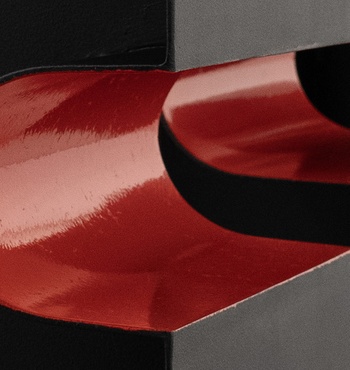BREAK
The work by Zulmiro de Carvalho shown in this exhibition: Ruptura, 1968-2018, series of 10 metallic elements, was designed in 1968 and completed many years later.
In Portuguese art, we often see works that remain in their powerful state for a long time, without immediate materialization, due to lack of opportunity or resources. Armando Alves or Ângelo de Sousa, to name just two cases, are among the artists who resumed projects that were not completed at the beginning of their respective careers, created in the conceptual, formal and material renewal of the 1960s. Driven by the desire to give shape to ideas, they returned to them, in a time of consolidating their path, as is now happening with Zulmiro de Carvalho.
In the experimental climate in which the work was conceived, it was the decade in which the sculptor began to participate in collective exhibitions, more specifically in 1964, in the 13th Magna Exhibition of the Escola Superior de Belas-Artes do Porto, a decade that would end with his entry as a teacher at this School (in 1969) and with his first solo exhibitions, at Cooperativa Árvore, in Porto, and at Galeria Buchholz, in Lisbon (both in 1970). Meanwhile, he spent time at Saint Martin's School of Art, in London, where, as a scholarship holder from the Calouste Gulbenkian Foundation, he was able to contact Anthony Caro and Philip King.
When Ruptura was designed, the sculptor created only three of the ten elements that made it up.
Shown and awarded, in 1969, with the Silver Medal at the Exhibition that marked the 50th anniversary of the death of Amadeo de Souza-Cardoso, it ended up becoming part of the collection of the Municipal Museum named after the painter from Amarante. Thus, there is a first version of the work, incomplete, in the Museum, and a second, complete version, in the artist's possession.
Seen now, more than 50 years after its conception, in the stability it demonstrates, in the austere presence of the material, in the restrained introduction of color and in the gradual reading it invites, one would not guess the vicissitudes of its production. On the other hand, we noticed, from this distance, how the work already contained the premises that would guide the artist's future creation: serial scheme, sequential sense, minimalist and essential vocabulary, clear volumes and archetypal forms. The inclusion of color clearly reflects the epochal context, in the pictorial appropriation that was widespread in this artistic discipline. But the most important aspect that can be seen in Ruptura is the linear movement that relates the ten vertical pieces, generating at its top a shape that progressively opens from the second element to cancel itself out in the last, remaining, in the upper area of the parallelepiped, the color residue. The sculpture is invested by drawing and movement, sensed in the union of its elements, captured in the movement that each of us makes. In Zulmiro de Carvalho's public work, the presence of cracks, lines of light breaking through the opaque material of the sculpture, will be common. In this work, it is color (also light) that insinuates itself. Only through the development of his work would one discover the performative dimension of its reception and the value of this invisible design that exceeds minimal formalism.
Laura Castro










